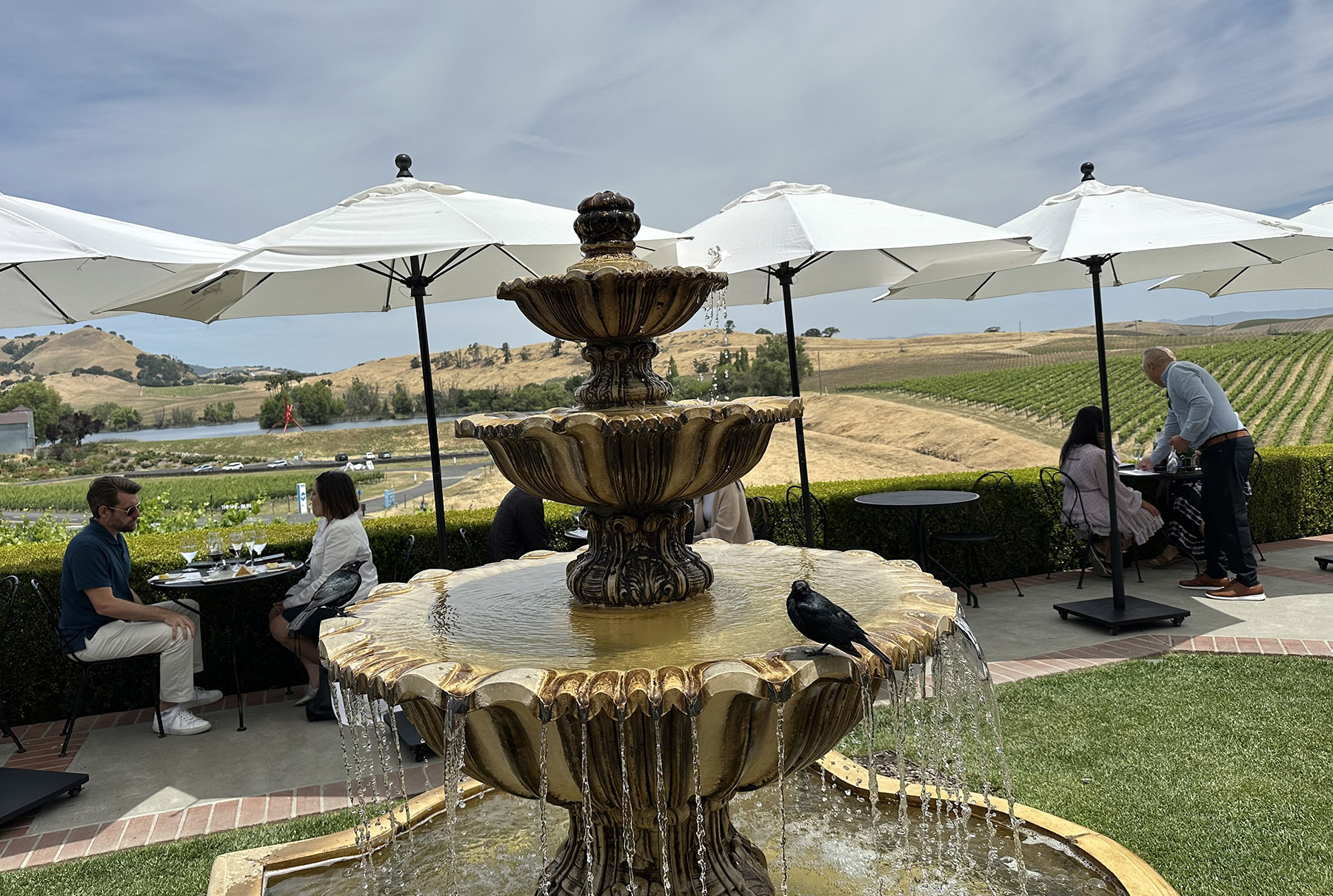Whenever Jiang Dong, a writer from Jinan in Shandong province, considers going on a vacation abroad, Napa Valley in northern California always makes it to his short list.

Jiang, 58, first visited the "serene and seclusive" town in September 2008 during a business trip to the United States. "The host arranged a two-day tour there. Our packed schedule included several wine tastings at Robert Mondavi, Stags' Leap and Beaulieu Vineyard; historic sites exploration and sightseeing," Jiang recalled.
The stretching grape trellis, foliage of vibrant colors and topnotch wineries along the way left a lasting fond memory, which he describes as "picturesque and worth recalling again and again".
More importantly, Napa offers a much sought-after spiritual tranquility, Jiang said. "In Chinese culture, we believe a talented writer needs good wines and a cloister to avoid interruption to his ideas and creations. In Napa, fortunately, I have found both. Like a starving mouse falling into a cheese shop, I was tipsy while sipping wines and bathing in the aroma of vineyards."
READ MORE: Nature's masterpiece along California coast
Napa Valley, about 80 kilometers northeast of San Francisco, contains a cluster of diversified topography — mild mountains, windswept estuarine flats, a fast-flowing river and extended forests.
Nestled between the chilly Pacific Ocean and usually torrent Central Valley, the region, therefore, is blessed with a distinctive Mediterranean climate featuring warm, dry summers and sunny, lukewarm winters for its valley towns of Napa, Yountville, St. Helena and Calistoga.
"Think about it: Only 2 percent of the Earth's surface is covered by a Mediterranean climate," said Matthew Cook, an entrepreneur who grew up in the valley and is well-versed in its history. "The diverse soil and climate allow grapes to ripen slowly and evenly. This also makes Napa Valley a haven for grape planting and winemaking."
Synonymous with one of the world's premier wine regions, Napa Valley is home to 475 wineries, 90 tasting rooms and 150 exquisite restaurants, including several Michelin-starred fine-dining establishments. It ages and produces a wide range of wines — cabernet sauvignon, merlot, pinot noir, chardonnay, sauvignon blanc, zinfandel and cabernet franc, just to name a few.
First saplings
According to Napa County archives, native Americans resided in the valley before 1839, when the first band of Spanish missionaries arrived, spreading Christian belief and planting the first grape saplings.
It was George Calvert Yount, the first settler, who decided to build a homestead in the area to expand grape plantations. Shortly after, John Patchett and Hamilton Walker Crabb helped introduce the first Vitis vinifera grape, also called the common grape vine, native to the Mediterranean region and central Europe.
"The flowering species are of commercial significance for wine and table grape production," Cook said. "In other words, the pioneers started a new chapter of the wine industry in Napa."
In 1861, Charles Krug established the valley's first commercial winery, with many following suit. Despite protests from local residents, Napa merchants funded the construction of a railroad in 1868 that connected San Francisco to the valley. The influx of visitors and gold miners helped the town of Napa prosper, attracting the wealthy and ambitious to invest in real estate, the metal industry and winemaking. By 1889, there were already 140 wineries in operation.
However, it was not until 1976 that Napa Valley and its wines finally gained international recognition at the Paris Wine Tasting, also known as the Judgement of Paris.
In a blind tasting, renowned oenophiles and connoisseurs rated wines from Napa Valley alongside top brands from Bordeaux and Burgundy of France, following a set of criteria to assess sweetness, acidity, tannin, alcohol and body.
The results astonished industry insiders. In both the chardonnay and cabernet sauvignon categories, California wines outperformed their French counterparts, clinching top honors. "The Paris moment is historic," Cook said."It also marks the end of the conventional belief that high-scale wines only originate from Europe.
"By the way, the champion wines were from Stag's Leap Wine Cellars 1973 and Chateau Montelena."
Refining image
Now a major enotourism (wine tourism) destination, Napa Valley keeps refining its image and reshuffling its resources to woo international travelers like Jiang. This undertaking aims to help rejuvenate the region's economy, which was heavily hit by the COVID-19 pandemic.
According to a study published by the local marketing organization for Napa County in August, about 3.7 million tourists visited the valley last year, spending more than $2.5 billion, a 13 percent increase from 2018.
"They (tourists) directly impact Napa Valley residents' quality of life," said Emma Swain, chairwoman for Visit Napa Valley and CEO of St. Supery Estate Vineyards and Winery.
ALSO READ: Toasting the Napa Valley builders
She added that the tax revenue would help local government fund public safety, libraries, parks and recreation, road repairs and more.
Su Tingting, a lifestyle influencer in Guangzhou, Guangdong province, is one among the 3.7 million visitors to Napa Valley.
"Beyond vineyard and wineries, I discovered many other aspects of Napa which are equally exciting," Su said."Take for example, riding on a hot air balloon at 5 am over the valley veiled in morning mist, or checking arrangement of marble tiles at the century-old Cedar Gables and Churchill Manor."
Photos of these activities make for great social media content. Su said,"I need to make sure my clicks get maximum hits."
Swain said 95 percent of visitors indicated they are likely to return to Napa Valley. "Yes, definitely a yes for me," Jiang said.



